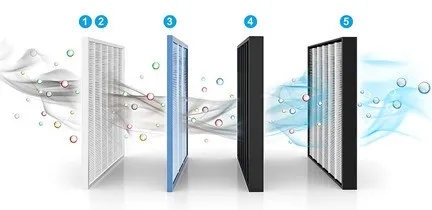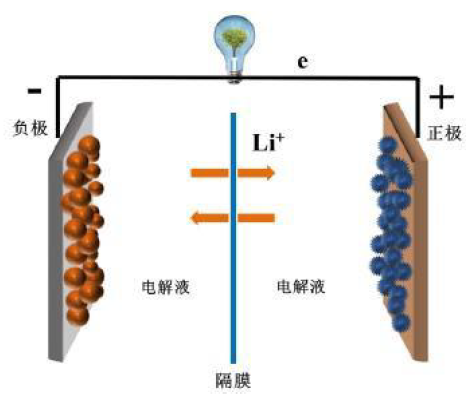Copyright © 2022 Foshan MBRT Nanofiberlabs Technology Co., Ltd All rights reserved.Site Map
Contents
1. The nature of PAN material
2. Application of electrospinning PAN
3. Electrospinning PAN process
4. Common spinning problems and solutions
1. The nature of PAN material
Polyacrylonitrile (PAN) is a polymer material obtained by radical polymerization of monomeric acrylonitrile. Polyacrylonitrile is a white powder with a density of 1.14-1.15g/cm, a glass transition temperature of about 95°C, and a melting temperature of 322°C. It is soluble in polar organic solvents such as dimethyl formamide (DMF), dimethyl sulfoxide (DMSO), sulfolane, ethylene nitrate, etc., and also soluble in concentrated aqueous solutions of inorganic salts such as thiocyanate, perchlorate, zinc chloride and lithium bromide, and special solvents such as concentrated nitric acid. Among them, DMF is widely used as a solvent for PAN because of its extremely strong solubility and high dielectric constant. PAN fiber has good resistance to sunlight and weather, and has good anti-mildew and anti-bacterial properties. This is because the carbon and hydrogen atoms in the nitrile group of PAN are connected by a σ bond and two π bonds. This structure can absorb high-energy ultraviolet light and convert it into heat energy, thereby protecting the main bond from degradation. PAN is the most used material among the three precursors of carbon fiber (PAN, pitch and viscose fiber). The advantage of choosing PAN as the precursor for carbon fiber preparation is that the carbonization yield is high (1000℃~1500℃ is 50%~55%), and the skeleton structure is rarely damaged when removing heteroatoms other than carbon. Both homo-PAN and copolymer PAN can be used to prepare carbon fibers. Although homo-PAN has the advantages of high crystallinity and regular chain structure, it is easy to concentrate heat during the pre-oxidation process, which makes PAN fibers thermally fused or difficult to maintain their morphology. In the production of carbon fiber, PAN copolymer is generally selected as the raw material for the preparation of raw silk. Commonly used comonomers include acrylic acid (AA), methacrylic acid (MMA), itaconic acid (IA), etc.

Figure 1 Structural formula of polyacrylonitrile
2. Application of electrospinning PAN
(1) Air filtration: The fiber air filter material is constructed by many complicated arrangement of fibers. The traditional fiber air filter material has a larger pore size. Even the pore size of the meltblown filter material with better filtering performance is ten to several tens of microns, and the effect of filtering fine particles is not good. PAN nanofiber membrane not only has the advantages of small pore size, high porosity (fluffy), large specific surface area, good adsorption performance, etc., but also has good solvent resistance, solar resistance and aging resistance, which is very suitable for air/water filter material.

Figure 2 Air filter
(2) Carbon nanofibers: Electrospinning PAN is the simplest and most economical method for preparing carbon nanofiber precursors in batches. Carbon nanofibers can be obtained after pre-oxidation and carbonization. The diameter of carbon nanofiber is generally 100~500nm. It is a quasi-one-dimensional carbon material between CNT and ordinary carbon fiber. It has high crystal orientation, good electrical and thermal conductivity, and can be used as anode material for super capacitor and lithium-ion batteries.

Figure 3 Li-ion battery structure
(3) Heavy metal ion and dye adsorption material: Heavy metal ion pollution and organic dye compound pollution have caused serious harm to the ecological environment and residents' health. Because PAN macromolecules have a large number of side groups -CN, and -CN has the characteristics of strong polarity and high activity, PAN can interact with many small molecule compounds physically or chemically, thereby realizing the modification of PAN fiber and giving the fiber new Performance. Among them, by amination or amidoximation on the surface of the PAN nanofibers, an amino group or amidoxime group with adsorption activity is introduced to form a coordinate bond with a metal ion. Coupled with the advantages of small fiber diameter and large specific surface area, it has potential application prospects in the fields of heavy metal ion adsorption and dye adsorption.

Figure 4 Heavy metal pollution
(4) Sound-absorbing materials: traditional sound-absorbing materials mainly include sound-absorbing cotton, space sound-absorbing bodies, perforated panels, sound-absorbing foam, etc., compared to traditional sound-absorbing materials. Electrospun PAN nanofiber material has the advantages of high bulkiness, high porosity, small pore size, large specific surface area, and light weight, so that the effective contact area of the sound wave and the material increases, and the number of contacts increases. Thereby, the material's air viscosity, heat conduction, fiber vibration, friction and other effects on sound energy are transformed into mechanical energy or thermal energy loss, so it has a huge application prospect in the field of sound absorption and noise reduction.

Figure 5 Noise pollution
3. Electrospinning PAN process
3.1 Main materials and instruments:
(1) Spinning material: PAN powder, molecular weight 50,000-200,000; DMF (or DMAc) solvent, analytically pure.
(2) Experimental equipment: 50mL conical flask, magnetic stirrer, water bath, electronic balance, E05 electrospinning machine.
3.2 Preparation of spinning solution:
Use an electronic balance to weigh a certain quality of solvent DMF into an Erlenmeyer flask, add a magnetic stirrer, and stir in a water bath; then weigh a certain quality of PAN and slowly add it to the stirring Erlenmeyer flask. Tighten the bottle cap to prevent water vapor from entering the conical flask; set the water bath temperature to 60°C and continuously stir and dissolve for 4 hours until the solution is clear and transparent (or translucent golden yellow), and then a PAN spinning solution with a certain mass concentration can be obtained.
The mass concentration of common PAN spinning solution is 5% -15%; the solvent system is DMF or DMAC.
3.3 Spinning process and parameters:
Pump the above PAN spinning solution into a 20mL syringe, fix the syringe to the injection pump of the spinning machine, install a 20G (1/2 inch, flat mouth) stainless steel needle, connect the needle to the positive pole of the high-voltage power supply, and connect the receiving roller to the negative pole of the high-voltage power supply. The receiving substrate is pasted on the roller; the receiving distance is adjusted to 15-20cm; the injection pump specification is set to 20mL, the liquid supply speed is 2mL/h, the roller speed is 300 rpm, the sliding table stroke is 20cm, and the spinning voltage is positive 15kV. Minus 5kV, temperature 35°C, humidity 40%, timing 120min, finally close the equipment door and open the exhaust.
Commonly used electrospinning receiving substrate: aluminum foil paper, release paper, non-woven fabric, mesh cloth, etc.
4. Common spinning problems and solutions
(1) Under the scanning electron microscope, there are many beads on the fiber: Generally, the PAN concentration in the spinning solution is too low, resulting in insufficient spinning solution viscosity. It is recommended to continue to increase the PAN concentration. Under normal circumstances, as the concentration of the spinning solution increases, the spun product will change from micro-nano particles, beaded fibers, uniform fibers to coarse fibers. In addition, if the molecular weight of PAN is too small, the PAN molecules are insufficiently entangled in the solution, which will also cause the fiber to produce beads. It is not recommended to use PAN materials with a molecular weight too low.
(2) In the spinning process, the needle tip hangs and floats: Generally, the spinning environment has too high humidity, and the spinning jet is cured in advance by moisture absorption in the air and the charge on the fiber is neutralized. As a result, the charge amount of the fiber is reduced, and the tensile performance of the fiber is weakened. You can try dehumidifier dehumidification or heating dehumidification.
(3) Gelation occurs during the preservation of the spinning solution: PAN spinning solution is easy to absorb water vapor in the air and solidify, so it needs to be stored in a dry and airtight condition. It is recommended to prepare it for current use or seal it for 15 days.